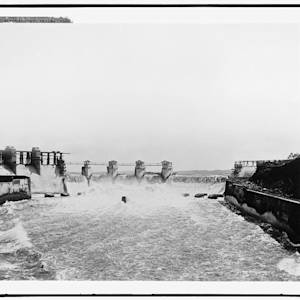Indus River
2023 CE • Pakistan
"The longest river in Pakistan, the Indus River also ranks as one of the largest in Asia. It originates in Tibet at the junction of the Sengge Zangbo River and the Gar Tsangpo River and flows from Mount Kailash in the Himalayas. Springs from melting glaciers feed the river . . . Civilizations have thrived near the Indus River for nearly 8,000 [years] . . . Today, the Indus provides water needed by Pakistan to thrive, including by supporting agriculture in the Punjab province – known as the breadbasket of Pakistan – and supplying drinking water to much of the country. The Indus also supports diverse aquatic ecosystems that include some 150 fish species and 25 amphibian species, including 22 that are endemic to the area. The Indus River and the Indus Delta are under threat from reduced flows, dam and canal construction, mangrove clearing and other habitat destruction, reduced sediment load, and severe pollution. Together, these impacts are severely degrading the health of this crucial river system. Another negative impact comes from climate change. Rising temperatures and changes in weather patterns result in lost snowpack in the Himalayas, where most of the Indus’ water originates . . . The Indus delta supports the largest arid climate mangroves in the world . . . The survival of Indus delta mangroves is dependent on adequate flows of freshwater from the Indus River as it flows through the delta and into the Arabian Sea. But dwindling Indus River water flow has led to the loss of about 86% of the mangrove forest cover over the last 30 years."
Francesca Sparaco, et al, "Earth Law for the Indus River," Earth Law Center, August 20, 2018.
Image: Arsalan Majid, CC BY-SA 4.0, via Wikimedia Commons


Learn about Maya Lin’s fifth and final memorial: a multi-platform science based artwork that presents an ecological history of our world - past, present, and future.

Discover ecological histories and stories of former abundance, loss, and recovery on the map of memory.

Learn how we can reduce our emissions and protect and restore species and habitats – around the world.

See how art can help us rethink the problems we face, and give us hope that each one of us can make a difference.

Help make a global memorial something personal and close to home. Share your stories of the natural world.


